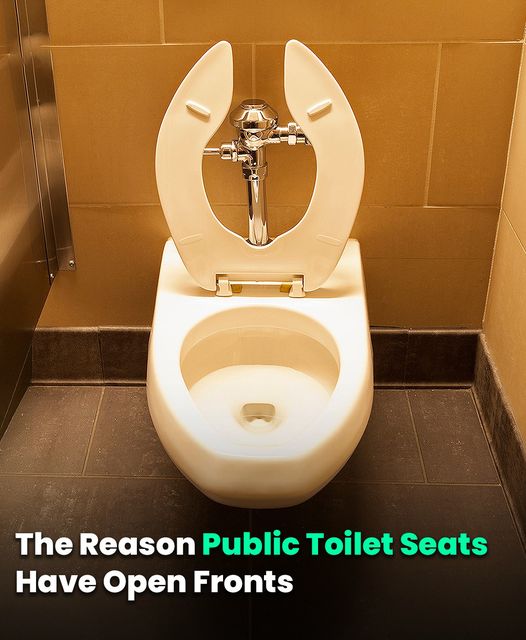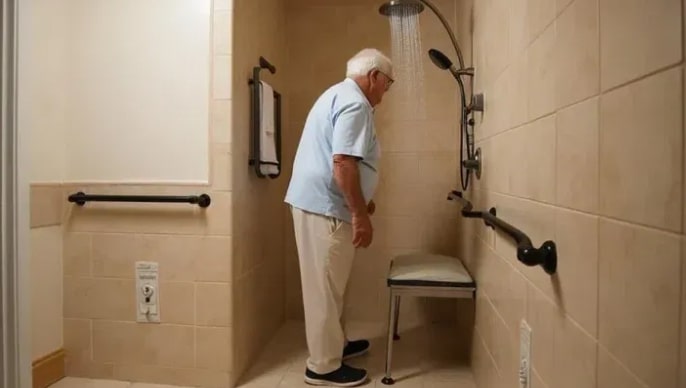When people learned the true reason why certain toilet seats have open fronts, they were shocked.
Toilet seat design may seem like a boring subject, yet the way these seats are shaped can spark interest and even debate.

The majority of toilet seats you will see are oval, but sometimes you will see a U-shaped one with an open front.
Although it is frequently found in public restrooms and certain private facilities, the rationale behind its design has frequently been ambiguous.
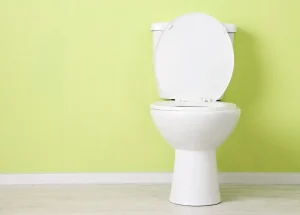
So far.
Over time, toilet seat designs have changed dramatically in response to shifting social mores and advances in technology.
Since the late 19th century, the “split seat,” also known as the open front toilet seat, has been in use.
These seats were initially intended for usage in public spaces, including hospitals and schools.
Open-front toilet seats are especially common in public restrooms in the United States, and this decision goes beyond simple cost-cutting.
According to How Stuff Works, the American Standard National Plumbing Code (ASNPC) set standards for chairs in public restrooms in 1955.
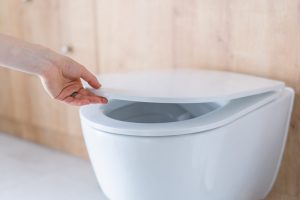
They declared: “Smooth, non-absorbent seats must be installed in water closets. Every water closet seat that is available for public use must have an open front.
In the US, open-front toilet seats became more and more popular as a result of this rule. By 1973, more people were using U-shaped seats, according to the International Association of Plumbing and Mechanical Officials (IAPMO).
Although this design is not required for all public restrooms, it does provide certain hygienic benefits.
They were first introduced as a sanitary way to limit direct touch with surfaces, which was particularly important in places with lots of traffic.
The goal of the design was to reduce the spread of germs and give people a better hygienic experience.
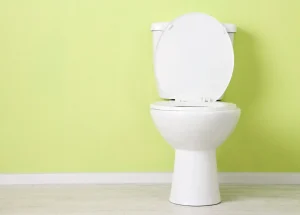
Yes, hygienic concerns are a major factor in the open-front design.
Conventional toilet seats, particularly those that do not fit tightly against the toilet bowl, can harbor bacteria and other diseases.
By removing the possibility of contact between the seat and the user’s body, open front seats lower the chance of contamination.
Because of the high user turnover rate and increased risk of germ transmission, this design is especially advantageous in public restrooms.
Additionally, cleaning is made easier by the open front. The region surrounding the bowl is unobstructed for janitorial staff to reach, guaranteeing a more comprehensive cleaning procedure.
Because this design removes a portion of the seat that could be easily exposed to splashes or errant sprays, it is hygienic for both men and women.
In addition to making cleaning easier for women, the gap eliminates the area of the seat that a man’s anatomy is likely to touch as he adjusts himself.
The open front makes it easier for people with mobility challenges, such as the elderly or those in wheelchairs, to move from their wheelchair to the restroom.
Because it isn’t a solid front, users can easily position themselves, encouraging independence and safety.
The open-front design can help those with disabilities and can help avoid accidents.
It lessens the possibility that users would bump into a solid seat, which is especially crucial in busy restrooms or for young children who might not be completely conscious of their surroundings.
IAPMO representative Lynne Simnick told Slate in a 2013 interview that the opening in the front reduces the possibility of women’s hands hitting the seat while enabling them to “clean the perineal area after using the water closet.”
However, because of its comfort, the oval shape is more frequently found in houses, therefore it is expected that you can keep your own toilet clean enough.
